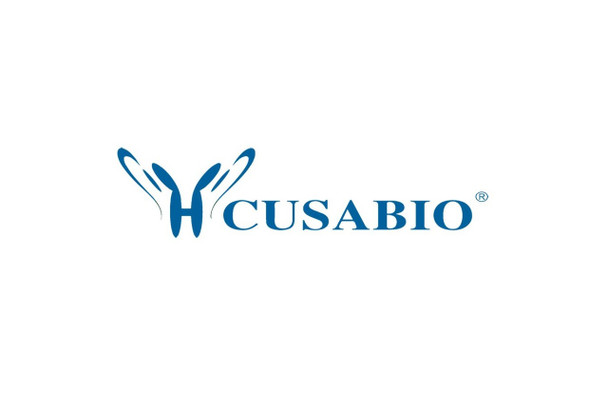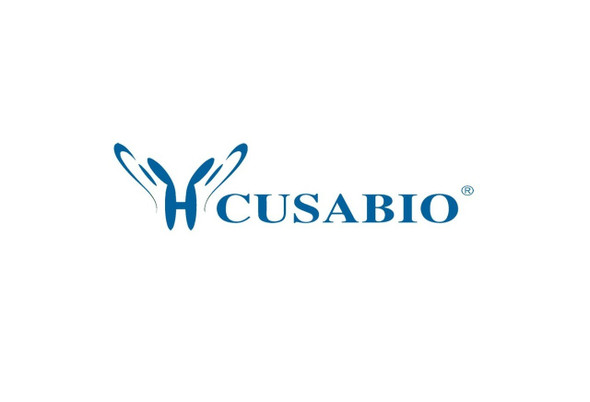Cusabio Human Recombinants
Recombinant Human Ras-related protein Rab-11A (RAB11A) | CSB-EP019153HU
- SKU:
- CSB-EP019153HU
- Availability:
- 3 - 7 Working Days
Description
Recombinant Human Ras-related protein Rab-11A (RAB11A) | CSB-EP019153HU | Cusabio
Alternative Name(s): YL8
Gene Names: RAB11A
Research Areas: Cancer
Organism: Homo sapiens (Human)
AA Sequence: GTRDDEYDYLFKVVLIGDSGVGKSNLLSRFTRNEFNLESKSTIGVEFATRSIQVDGKTIKAQIWDTAGQERYRAITSAYYRGAVGALLVYDIAKHLTYENVERWLKELRDHADSNIVIMLVGNKSDLRHLRAVPTDEARAFAEKNGLSFIETSALDSTNVEAAFQTILTEIYRIVSQKQMSDRRENDMSPSNNVVPIHVPPTTENKPKVQCC
Source: E.coli
Tag Info: N-terminal 6xHis-SUMO-tagged
Expression Region: 2-213aa
Sequence Info: Full Length of Mature Protein
MW: 39.9 kDa
Purity: Greater than 90% as determined by SDS-PAGE.
Relevance: The small GTPases Rab are key regulators of intracellular mbrane trafficking, from the formation of transport vesicles to their fusion with mbranes. Rabs cycle between an inactive GDP-bound form and an active GTP-bound form that is able to recruit to mbranes different set of downstream effectors directly responsible for vesicle formation, movent, tethering and fusion. That Rab regulates endocytic recycling. Acts as a major regulator of mbrane delivery during cytokinesis. Together with MYO5B and RAB8A participates in epithelial cell polarization. Together with RAB3IP, RAB8A, the exocyst complex, PARD3, PRKCI, ANXA2, CDC42 and DNMBP promotes transcytosis of PODXL to the apical mbrane initiation sites (AMIS), apical surface formation and lumenogenesis. Together with MYO5B participates in CFTR trafficking to the plasma mbrane and TF (Transferrin) recycling in nonpolarized cells. Required in a complex with MYO5B and RAB11FIP2 for the transport of NPC1L1 to the plasma mbrane. Participates in the sorting and basolateral transport of CDH1 from the Golgi apparatus to the plasma mbrane. Regulates the recycling of FCGRT (receptor of Fc region of monomeric Ig G) to basolateral mbranes. May also play a role in melanosome transport and release from melanocytes.
Reference: Identification and characterization of a human homolog of the Schizosaccharomyces pombe ras-like gene YPT-3.Drivas G.T., Shih A., Coutavas E.E., D'Eustachio P., Rush M.G.Oncogene 6:3-9(1991)
Storage: The shelf life is related to many factors, storage state, buffer ingredients, storage temperature and the stability of the protein itself. Generally, the shelf life of liquid form is 6 months at -20?/-80?. The shelf life of lyophilized form is 12 months at -20?/-80?.
Notes: Repeated freezing and thawing is not recommended. Store working aliquots at 4? for up to one week.
Function: The small GTPases Rab are key regulators of intracellular membrane trafficking, from the formation of transport vesicles to their fusion with membranes. Rabs cycle between an inactive GDP-bound form and an active GTP-bound form that is able to recruit to membranes different set of downstream effectors directly responsible for vesicle formation, movement, tethering and fusion. That Rab regulates endocytic recycling. Acts as a major regulator of membrane delivery during cytokinesis. Together with MYO5B and RAB8A participates in epithelial cell polarization. Together with RAB3IP, RAB8A, the exocyst complex, PARD3, PRKCI, ANXA2, CDC42 and DNMBP promotes transcytosis of PODXL to the apical membrane initiation sites (AMIS), apical surface formation and lumenogenesis. Together with MYO5B participates in CFTR trafficking to the plasma membrane and TF (Transferrin) recycling in nonpolarized cells. Required in a complex with MYO5B and RAB11FIP2 for the transport of NPC1L1 to the plasma membrane. Participates in the sorting and basolateral transport of CDH1 from the Golgi apparatus to the plasma membrane. Regulates the recycling of FCGRT (receptor of Fc region of monomeric Ig G) to basolateral membranes. May also play a role in melanosome transport and release from melanocytes.
Involvement in disease:
Subcellular Location: Cell membrane, Lipid-anchor, Recycling endosome membrane, Lipid-anchor, Cleavage furrow, Cytoplasmic vesicle, phagosome
Protein Families: Small GTPase superfamily, Rab family
Tissue Specificity:
Paythway: Endocytosis
Form: Liquid or Lyophilized powder
Buffer: If the delivery form is liquid, the default storage buffer is Tris/PBS-based buffer, 5%-50% glycerol. If the delivery form is lyophilized powder, the buffer before lyophilization is Tris/PBS-based buffer, 6% Trehalose, pH 8.0.
Reconstitution: We recommend that this vial be briefly centrifuged prior to opening to bring the contents to the bottom. Please reconstitute protein in deionized sterile water to a concentration of 0.1-1.0 mg/mL.We recommend to add 5-50% of glycerol (final concentration) and aliquot for long-term storage at -20?/-80?. Our default final concentration of glycerol is 50%. Customers could use it as reference.
Uniprot ID: P62491
HGNC Database Link: HGNC
UniGene Database Link: UniGene
KEGG Database Link: KEGG
STRING Database Link: STRING
OMIM Database Link: OMIM










